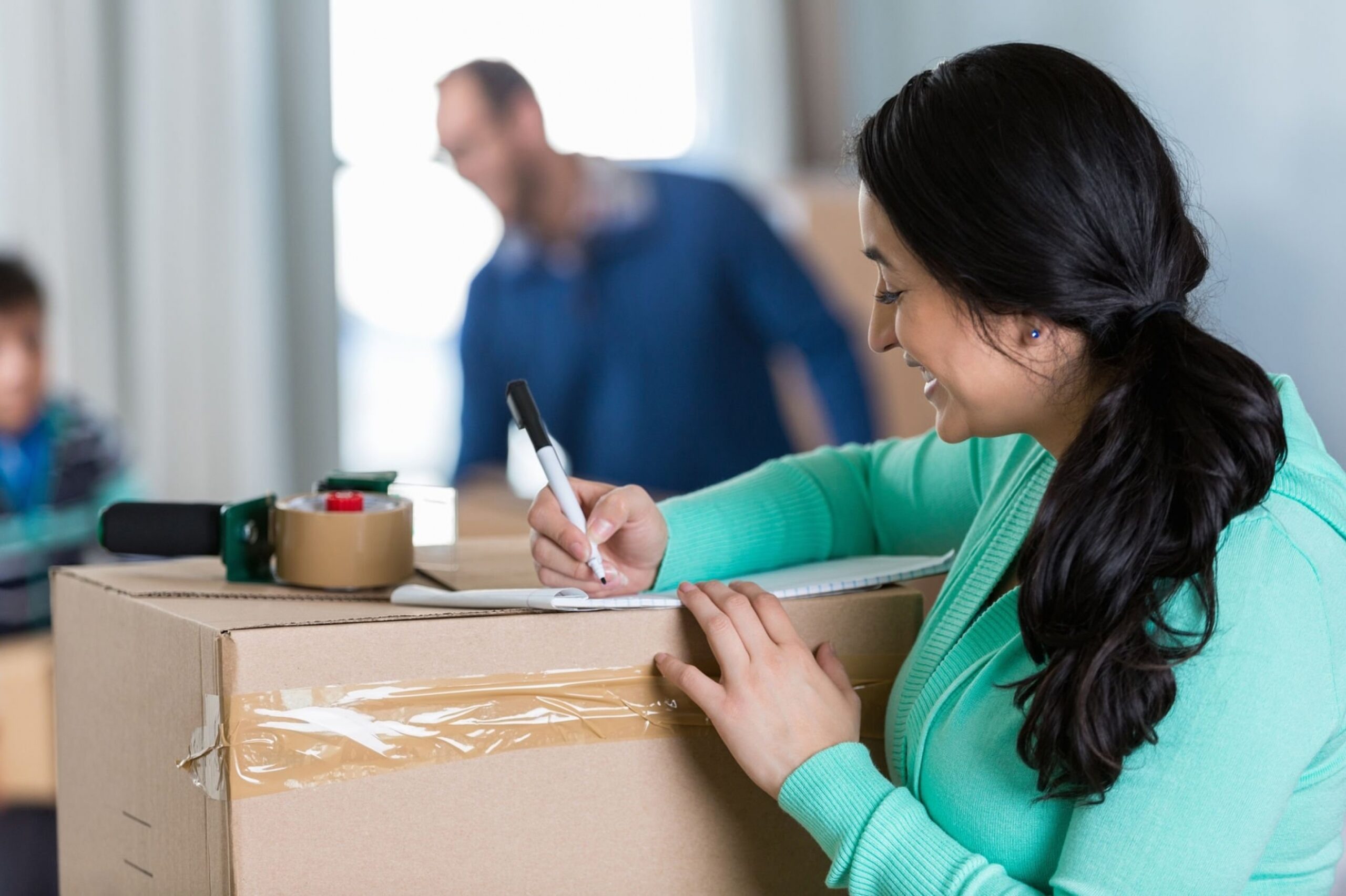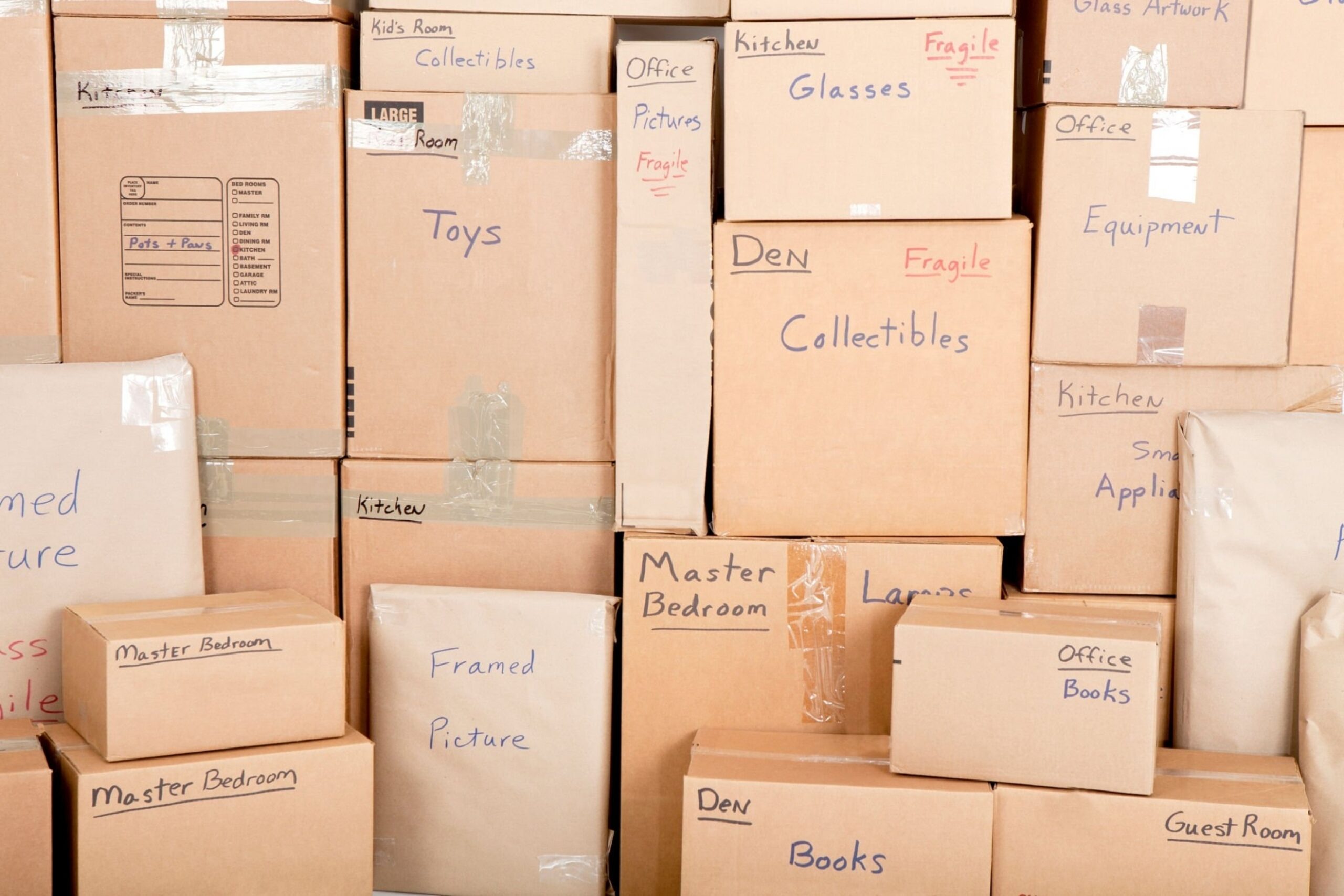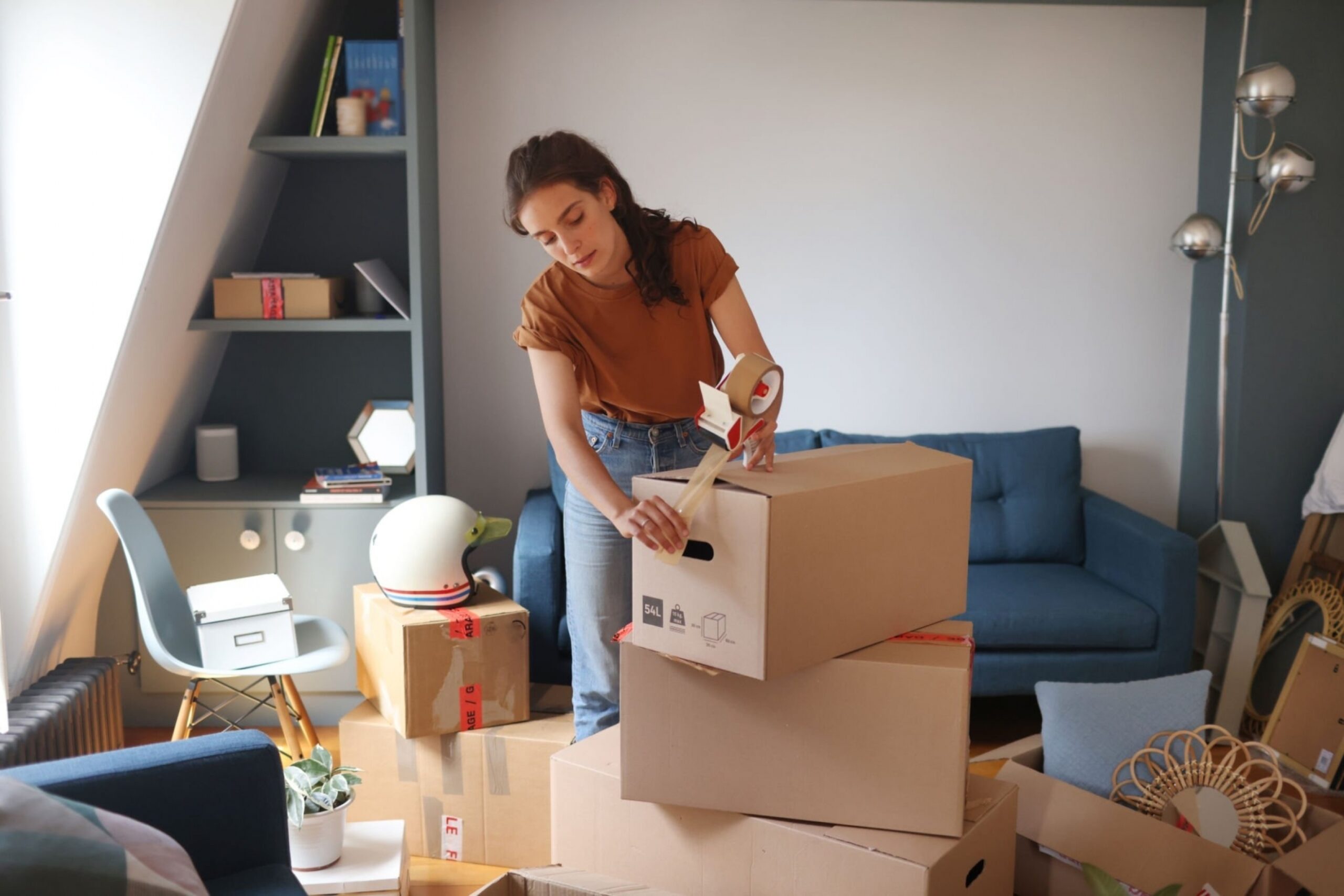Moving is a huge task for everyone, especially if you’re going through the whole process on your own. There always seems to be too many items to pack away and too little space in the boxes, not to mention the random items that tend to appear as soon as the boxes are sealed.
While there is no universally correct way to pack for a move, there are some ways you can make the whole process more efficient and less stressful. Here are a few of our best-recommended tips and tricks for packing for your upcoming move.
1. Have a Plan
Before you start throwing things into boxes just to get them out of the way, take a moment to organize and plan the process. First and foremost, you’ll need to make sure you have everything you’re going to need for the packing process before you actually start packing. Here is a small list of packing essentials:
- Sturdy multi-sized boxes
- Durable packing tape
- Bubble wrap or paper cushioning
- Label stickers
- Permanent markers
- Moving blankets
- Color coding materials
- Notepad or binder
Once you have all your materials on hand and ready to go, you should make a plan for how you’re going to be packing each room as well as how you’ll be sorting each item. Placing things into boxes simply however they fit isn’t particularly safe or efficient, it is best to be mindful of how you pack up the rooms of your home. Plan for the boxes you’ll need for each room as well as how to make sure any delicate or sentimental items are safe when moving.
2. Purge While You Pack
Moving is the best time to get rid of non-essential clothing and home goods from around the home. Throwing out, donating, or selling items you don’t want to bring with you to your new space or won’t have room for is the best way to minimize the hassle of packing and unpacking. Set aside some space to organize things you plan on getting rid of or are on the fence about bringing, and until you make a decision or are ready to say goodbye, it’ll all be out of the way of the rest of your packing.
You should start the purging process as soon as possible, too. In fact, the best time to start is a few months ahead of your big move so that you won’t be in a rush while making choices and risking any mistakes along the way. Be thorough and motivated when decluttering so that you’ll only be bringing the good stuff that makes you and your family happy into your new home.
3. Make a List

You made your plan for packing up each room already, but how do you know what to pack in each room and in what order? Now is the time to sit down and organize a list of the items that will be packed up in each room, as well as items that you’ll be saving for the final moving day. This way you’ll be able to cross things off and make a note of what still needs to be done so you won’t be running around trying to figure out why certain things haven’t been packed yet.
The more organized and thoughtful you are about the packing process, the less stressful and chaotic the unpacking process will be. Remember that you are basically saving your future self a huge amount of time and headaches when you make notes and lists. Be meticulous and over-prepared now so that you’ll be ready for everything later.
4. Round Up Cables
Electronics and their respective wires and chargers can easily take up tons of space when packing up the house. Plus if you’re anything of a pack-rat, you might have a pile of cables and cords that you haven’t figured out how to use around the house in some time. To make packing these lengthy and mismatched wires a simple task, try these tips:
- Sort them out by capability
- Keep current spare phone chargers in an accessible location
- Make sure wires are untangled before wrapping or rolling them up
- Use a twist or zip tie to secure cords
- Place cords in labeled bags to save space
- Keep bags of cords with corresponding electronics
5. No “Almost Empties”
We mentioned decluttering earlier, but here’s something to keep in mind when it comes to the bathroom and kitchen in particular. If you have any items that have been so close to empty or sat broken in a drawer for far too long, it’s time to toss them out. These little “almost empties” and broken or worn-out items don’t need to take up any space in a box or bag that is already near capacity. Here is a little example of the items that don’t need priority space in your moving boxes:
- Mealtime leftovers
- Close to empty condiments
- Cleaning supplies on their last use
- Worn out and stained towels
- Large bottles with little product
- Thoroughly squeezed tubes of toothpaste
- Broken tools or electronics
6. Label EVERYTHING

This little tip should basically be a no-brainer: put labels on every box and bag you fill. Future you should have no questions as to where something is or what’s in a particular box. Label the top and sides of each box so that everything can be sorted and organized properly at any stage of the process. Make a system for packing up each room and make sure everything is labeled accurately. You should also make sure that boxes containing glass and other fragile items are clearly and obviously labeled so that there is no risk of anything breaking.
You can also simplify things by creating a color-coding or numbering system for rooms or zones within your current and new homes. Grab a set of colored stickers or markers and map out how everything can be organized and unpacked when it comes time for that. We’ll say it again: remember to save your future self a headache!
7. Know the Contents
When you’re packing your moving boxes in each room, make a note of what you’re placing in each one. We suggest having a physical list of the contents of each box so that you know exactly where everything is. You can keep track of everything best when you have a color coding system or number assigned to each box, that way you can make sure every box goes to the right room when you’re starting to unpack.
Another great reason to have a list of each box’s contents is so that if you hire a moving company, the movers know to be careful when moving your items into and out of their truck. You’ll also be able to tell if any items or whole boxes are missing after you’ve moved and be able to let the company know what you’re looking for. It is best to be prepared for anything, especially when moving.
8. Save the Essentials for Last
As you get closer and closer to moving day, you’ll probably start to notice how empty your home feels when everything is being packed away. However, not everything in the home should be tucked neatly away. Your toiletries, frozen and refrigerated food, in-season clothing, medications, and kid/pet supplies should remain unpacked until the day of the move. What would be the use of packing all your clothes away if you’re still going to need to wear them?
No one likes living out of boxes, so remember to set your daily essential items aside while you pack up everything else. We suggest having a designated space or room in which everyone can set aside some clothes, electronics, supplies, and toiletries so that everything you don’t need to pack yet is out of the way.
9. Keep Cleaning Supplies Handy
When you clear a room of everything that can be packed up and removed, you’ll likely notice how much dust and debris has accumulated. Ideally, you’ll also notice that you now have access to areas of the room that haven’t received TLC in years. Our tip is to keep your cleaning supplies and equipment unpacked and at the ready so that you’ll be able to give each room a deep clean once it’s been completely packed up.
Here are some cleaning essentials to have on hand before moving day:
- Multi-surface cleaner
- Glass cleaner
- Shower/ tub cleaner
- Cleaning rags or paper towels
- Disinfectant spray/ wipes
- Rubber gloves
- Vacuum
- Broom/ sweeper mop
- Carpet cleaner
- Mop
10. Make an Unpacking Plan
One of the best ways to simplify the unpacking process once you’ve transferred all of your belongings to your new space, is by having a plan. If you’re lucky enough to have access to your new home before you officially move out of your old one, you can start the unpacking process anytime you want!
Try setting goals or having an organizational motivation when you unpack, you’ll get the job done in no time. Better yet, before you unpack, make sure you have bins, shelves, and other organizational tools for around the house to keep everything looking as tidy as possible. Welcome to your new home!
Benefits

If you’re wondering why you should even bother putting in extra time and effort when packing for a move, allow us to resolve that. We know packing can be a pain and can often become chaotic and overwhelming, but imagine if there was no rhyme or reason for the way you packed your moving boxes. Unpacking would be just as hectic, fragile items could break during the move, sentimental family belongings could be lost, and your new home could become even more of a mess than your old one.
When you create and utilize a system for packing each room and item within your old home, you are more mindful and careful with the things you love. Moving is an opportunity to get organized and declutter down to the essentials so that you can come into your new space with a clear mind and tidy atmosphere. Take some time to throw out the old so that you can truly start fresh with the new!
FAQ
Where do I start decluttering for a move?
When you are starting to declutter your home before a move, you should always start in the room you and your family use the least so that you have a space to set aside your essential items for later. Once your essentials are out of the way, decluttering and packing each room will be easier.
What do movers move first?
Professional movers will almost always move the largest and heaviest items in the home, like furniture and appliances, first. This is to ensure that there will be space on their truck for other pieces of furniture and moving boxes.
How do I start a moving plan?
When creating a plan for moving, always start by creating a room-by-room packing checklist and set aside a budget for a moving company and packing supplies. You’ll also want to start decluttering every room of your home as early as possible so that you’ll only be packing necessities.
What order should you move stuff in?
When moving, you should move your larger furniture and appliances first, followed by smaller and non-essential items. If you aren’t bringing appliances, you should still ensure that your larger furniture is loaded onto the moving truck first so that there is room for smaller furniture and boxes later on.
What should you not do when moving?
The most important things you should never do is not allow yourself enough time to pack properly and not packing with care or purpose. Packing moving boxes is a very important part of the moving process and can even make or break the whole moving experience.

Are you planning and packing for a big move soon? What kind of packing and planning tips have you come across and would like to share? Tell us about your tips and tricks in the comments below, we love hearing from our readers and clients!
If you’re looking for more helpful guides for around the house, or if you’re in the market for a move-out or move-in cleaning for your home, new or old, we’ve got you covered! Check out www.cleanzen.com/chicago to read more from our cleaning and lifestyle blog or to browse our selection of cleaning services. Contact us today to see how we can help you out around the house!
The post 10 Genius Tips for Packing for Your Move appeared first on Cleanzen.
from Cleanzen https://cleanzen.com/blog/how-to-organize-your-move/
via IFTTT

No comments:
Post a Comment